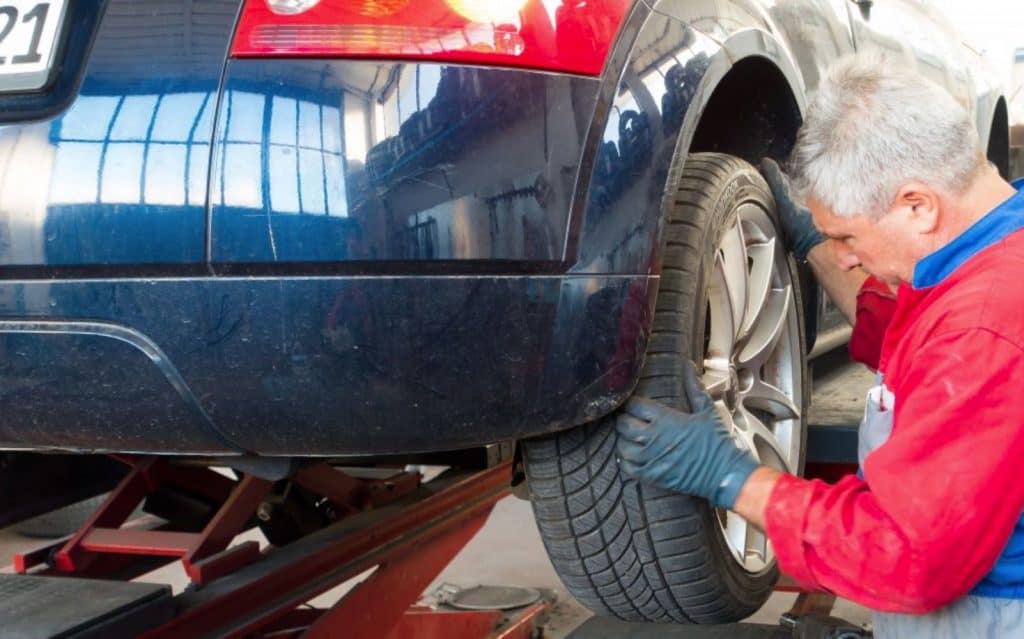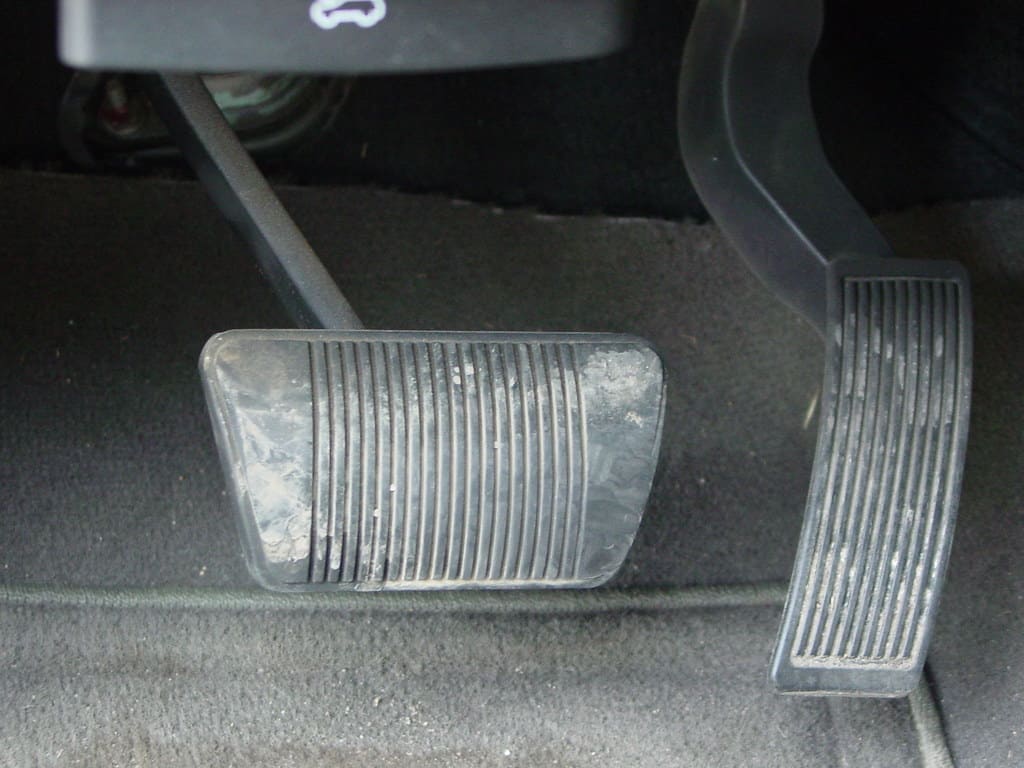
Are you tired of squealing brakes and excessive dust on your wheels? You might want to consider switching to ceramic brake pads.
These high-tech components have become increasingly popular among car enthusiasts and everyday drivers alike.
Ceramic brake pads offer superior performance, longevity, and cleanliness compared to traditional metallic options.
They’re designed to handle high temperatures and provide consistent stopping power, making them an excellent choice for many vehicles.
Ceramic pads can last up to 100,000 miles, which means fewer trips to the mechanic and more money in your pocket.
But are they the right choice for your ride?
While ceramic pads boast many advantages, they also come with a heftier price tag. Your driving habits and vehicle type play a crucial role in determining whether these pads are worth the investment.
Key Takeaways
- Ceramic brake pads offer superior performance and longevity
- They produce less dust and noise compared to metallic alternatives
- The higher cost may be offset by longer lifespan and improved braking experience
What Are Ceramic Brake Pads?
Ceramic brake pads are the new kids on the block in the world of automotive braking. They’re like the cool, quiet cousin who shows up at family gatherings and impresses everyone with their smooth moves.
Composition and Characteristics

Ceramic brake pads are made from a unique blend of ceramic fibers, bonding agents, and tiny copper fibers.
Think of them as the gourmet recipe of the brake pad world.
These pads are lighter than their metallic counterparts, which means less strain on your suspension.
They’re also incredibly quiet. No more screeching like a banshee when you hit the brakes!
Ceramic pads produce a fine, light-colored dust that doesn’t stick to your wheels. Your rims will thank you for the spa treatment.
Heat dissipation is another forte of ceramic pads. They can take the heat without warping or fading, making them ideal for those of you who like to push your car to its limits.
Comparison to Other Types
When you stack ceramic pads against organic and semi-metallic options, you’ll notice some key differences.
Organic pads are the softies of the bunch – they’re gentle on rotors but wear out faster than you can say “brake check.”
Semi-metallic pads are the tough guys. They’re great for performance but can be noisy and hard on rotors.
Ceramic pads strike a balance, offering longevity that can reach 80-100,000 miles, compared to the typical 40,000-mile lifespan of other materials.
Ceramic pads also offer better all-around performance. They’ve got good bite in most conditions, though they might be a tad sluggish when it’s freezing out.
Price-wise, they’re the caviar of brake pads – more expensive, but often worth the splurge for their durability and clean operation.
Advantages of Ceramic Brake Pads

Ceramic brake pads offer several perks that’ll make you wonder why you didn’t switch sooner. They’re like the quiet, clean-freak cousin who overstays their welcome but you don’t mind because they’re so darn helpful.
Quiet Operation
Ever feel like your car is trying to impersonate a banshee when you hit the brakes? Well, ceramic pads are here to shush that noise.
They’re designed to keep things whisper-quiet, even when you’re stopping on a dime.
You’ll notice the difference immediately. No more screeching at stoplights or waking the neighbors when you pull into your driveway at midnight.
It’s like your brakes took a vow of silence, but they’re still working hard.
This quiet operation isn’t just easy on the ears. It’s a sign that your brakes are doing their job smoothly and efficiently.
Your passengers will thank you, and you might even forget you’re braking at all.
Less Brake Dust
Remember when your wheels used to look like they’d been through a dust storm after just a week? Ceramic pads are here to save your Saturday car wash routine.
These pads produce significantly less brake dust than their metallic counterparts. The dust they do create is lighter in color and doesn’t stick to your wheels like it’s been superglued on.
You’ll spend less time scrubbing your wheels and more time admiring them. Plus, your car will look cleaner for longer periods.
It’s like having a mini car wash built right into your brakes!
Longevity and Wear
Ceramic brake pads are the marathon runners of the brake world. They’re built to last, often outlasting other types of brake pads by a considerable margin.
These pads are less likely to wear down your rotors, saving you money on replacements in the long run.
They’re also champs at handling high temperatures without fading, which means consistent performance even under heavy use.
You’ll find yourself visiting the mechanic for brake work less often. And when you do, there’s a good chance you’ll only need to replace the pads, not the rotors.
It’s like your brakes are giving your wallet a break too!
Performance Aspects

Ceramic brake pads pack a punch when it comes to performance. You’ll find they offer some nifty advantages that might just make your driving experience a whole lot smoother.
Braking Performance
Ceramic brake pads offer superior performance compared to their metallic counterparts.
You’ll notice a crisp, responsive feel when you hit the brakes.
These bad boys excel in everyday driving conditions, giving you that confidence-inspiring bite.
But here’s where it gets interesting: ceramic pads really shine in high-performance situations.
If you’re the type who likes to push your ride to the limit, you’ll appreciate the consistent stopping power they provide.
One quirk to keep in mind: ceramic pads can take a bit longer to warm up. So if you’re starting your morning commute in chilly weather, give ’em a chance to get toasty before you start channeling your inner race car driver.
Heat Dissipation
When it comes to keeping their cool, ceramic brake pads are the James Bond of the braking world.
These suave operators handle heat like a pro, which is crucial for maintaining performance under pressure.
You’ll find that ceramic pads dissipate heat more effectively than other types.
This means less brake fade during those long downhill stretches or spirited driving sessions. Your brakes stay consistent, even when the going gets hot.
But here’s a fun fact: while they’re great at managing heat, ceramic pads can actually take longer to warm up in cold conditions.
So if you live in a place where polar bears vacation, you might need to give your brakes a little extra time to reach optimal temperature.
Driving Style Considerations
Your driving style is like your signature dance move – unique and telling.
If you’re the type who treats every stoplight like the start of a drag race, ceramic pads might just be your new best friend.
These pads excel in high-performance situations, making them ideal for sports cars and enthusiastic drivers.
You’ll appreciate their consistent performance, even when you’re pushing your vehicle to its limits.
But here’s the kicker: if you’re more of a Sunday driver, ceramic pads might be overkill.
They take longer to break in and perform best when they’re nice and toasty.
So if your idea of adventure is a leisurely cruise to the grocery store, you might not reap all the benefits these high-tech pads have to offer.
Potential Drawbacks
Ceramic brake pads aren’t all sunshine and rainbows, folks. They’ve got a couple of quirks that might make you think twice before slapping them on your ride.
Higher Costs
You might need to dig a little deeper into your pockets for these bad boys. Ceramic brake pads come with a heftier price tag compared to their metallic cousins.
But while you’re shelling out more upfront, these pads could save you some green in the long run.
They tend to last longer, so you won’t be visiting your mechanic as often. Think of it as an investment in your car’s future.
Less Effective in Certain Conditions
Now, don’t get me wrong, ceramic pads are tough cookies. But they’re not invincible. In extreme conditions, they might not perform as well as you’d hope.
Cold weather? These pads might take a bit longer to warm up and give you that bite you’re looking for.
Heavy-duty vehicles? Ceramic pads might not be your best bet.
They’re great for your average Joe’s car, but if you’re hauling heavy loads, you might want to stick with semi-metallic pads.
Maintenance and Replacement
Keeping your ceramic brake pads in tip-top shape doesn’t have to be a pain in the tailpipe. With a little know-how, you’ll be cruising smoothly and stopping on a dime.
Inspecting and Changing Brake Pads
You’ll want to check your ceramic brake pads every 10,000 miles or so.
It’s like giving your car a quick physical – better safe than sorry! Look for wear indicators, those little metal tabs that screech when it’s time for new pads.
When the pad thickness gets down to about 1/4 inch, it’s time to shop for replacements.
Don’t wait until you hear metal-on-metal – that’s like waiting for your engine to explode before changing the oil!
Changing ceramic pads is pretty straightforward:
- Jack up the car
- Remove the wheel
- Unbolt the caliper
- Swap out the old pads
- Reverse the process
Remember to break in new pads gently. No sudden stops for the first 200 miles, or you’ll be back in the garage before you know it!
Compatibility with Brake Rotors
Your ceramic pads and rotors should be best buddies, not frenemies.
Ceramic pads are gentler on rotors, which means less wear and tear on your whole brake system.
But don’t get too cozy – you still need to resurface or replace rotors occasionally.
A warped rotor is like a wobbly wheel – it’ll make your ride about as smooth as a rodeo bull.
Keep an eye on your brake fluid too. Low fluid can mean worn pads or a leak.
Either way, it’s not something you want to ignore unless you fancy trying to stop your car Fred Flintstone style!
Frequently Asked Questions
Ceramic brake pads have their pros and cons, just like your favorite uncle at Thanksgiving dinner.
Let’s dive into some burning questions about these high-tech stoppers.
Why might one choose ceramic over metallic brake pads for their ride?
Ceramic brake pads are the quiet achievers of the braking world.
They’ll keep your wheels looking spiffy with less dust than their metallic cousins.
Plus, they’re as quiet as a mouse, perfect for those stealth missions to the grocery store.
What can be the downsides of opting for ceramic brake pads on a daily driver?
Your wallet might feel a bit lighter after purchasing ceramic pads.
They’re like the caviar of brake pads – tasty but pricey.
For everyday driving, you might find them overkill unless you’ve got a need for top-notch performance.
How do the costs typically compare between ceramic brake pads and standard OEM pads?
Prepare for a bit of sticker shock.
Ceramic pads can cost you more than double what you’d pay for standard OEM pads.
But remember, they’re like a good pair of shoes – they last longer and keep you looking sharp.
In the long haul, do ceramic brake pads and rotors play well together, or is it a recipe for more frequent replacements?
Ceramic pads and rotors are like an old married couple – they get along famously.
These pads are gentler on rotors, meaning you might not be visiting your mechanic as often.
It’s a long-term relationship that could save you some cash down the road.
For those with a need for speed, do ceramic brake pads keep up on the race track or should they take a pit stop?
If you’re channeling your inner Speed Racer, ceramic pads might not be your best pit crew.
They’re great for street performance, but on the track, they can get overwhelmed by the heat.
For serious racing, you might want to look elsewhere.
Are there noticeable differences in the braking performance between semi-metallic and ceramic pads in wet conditions?
When the skies open up, ceramic pads keep their cool. They perform consistently in wet conditions. Some semi-metallic pads might get a bit slippery.
It’s like having an umbrella for your brakes – always prepared for a rainy day.
